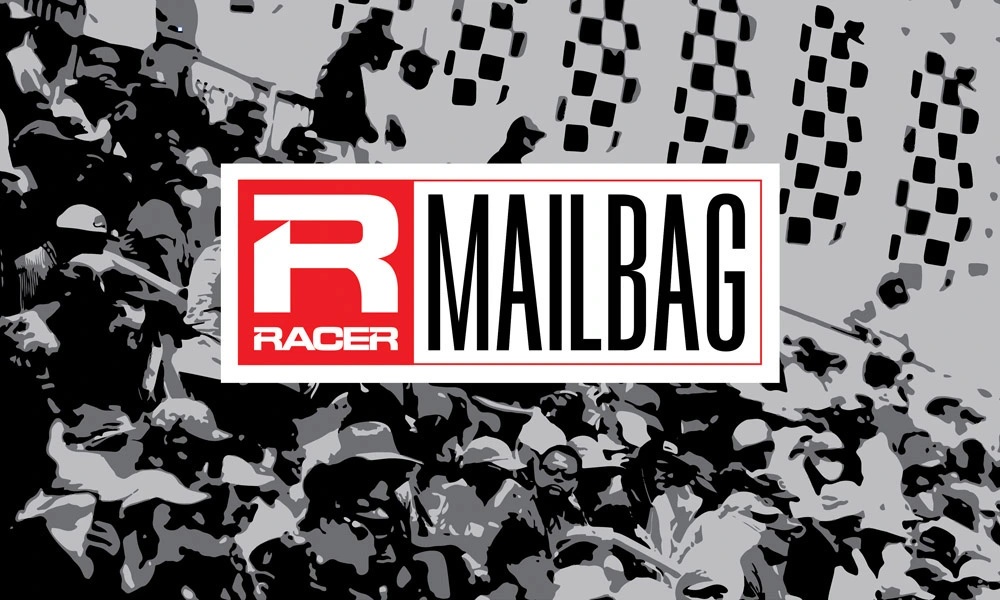Q: A reader has asked why Brands Hatch lost the British Grand Prix in 1986. Simple answer. John Foulston and Bernie Ecclestone both wanted to buy it. John Webb ensured that Foulston got the deal. Bernie called John the same day he lost the deal and told him the GP was not going back.
The excuses such as long-term deals and track safety simply covered up the truth.
AW
CM: I definitely wouldn’t put it past Bernie to respond in that way if he was trying to buy it, and he’s been interested in circuits on a number of occasions, but as his version of F1 continued to expand it was a venue that was going to need expansion, too. Some pretty big redevelopments were discussed soon after that, but having not been around at the time I can’t tell you which will have been the primary factor.
Q: One thing I haven’t seen discussed is, how will Hamilton and Leclerc sort out their positions at Ferrari? Ferrari is long known for having clear No. 1 and No. 2 drivers. I’m sure that neither Hamilton nor Leclerc would accept being classified as No. 2. So how do you see it working out?
Bob Mason, Winston Salem, NC
CM: I’d argue that in the Leclerc and Carlos Sainz era there hasn’t been a clear No. 1 or No. 2. Ferrari will back one driver over the other whenever the situation requires, but having not been in a title fight it appears they had equal chances. Even in 2022 when there was an outside chance, Ferrari didn’t use team orders to back Leclerc over Sainz mid-season (I’m thinking of Silverstone, for example) and then last year Leclerc had to help Sainz to give him a better chance of winning in Singapore.
Based on that, I think they’ll let the two drivers fight it out to prove they should be the one who gets the backing if there’s a title battle unfolding, and that’s not alien to either of them given Leclerc’s pairing with Sebastian Vettel in the past, and the way Hamilton’s partnerships with George Russell and Nico Rosberg have been handled at Mercedes.

THE FINAL WORD
From Robin Miller’s Mailbag, February 22, 2017
Q: Do you feel that IndyCar has finally hit a plateau under its current ownership in terms of growth and series development? I was a fanatical fan of CART back in the ’90s and lost all interest during the years of The Split. I jumped back in at reunification and saw several signs of hope that this series was on its way back. But after several years of missed opportunities and lackadaisical effort by those at the helm, it seems as though IndyCar has settled into its new role in the auto racing world: a niche series.
Content to have IndyCar serve as a support series for the Indy 500, ownership just does not seem to have either the ambition to grow the series into a major player again, or the skills to do so, or both. In a sport whose M.O. has long been one of innovation and progress, I can’t recall a more boring, stagnant off-season with so little to get excited about. Many will point to the cars being fairly evenly matched and ostracize any fan that can’t accept that as being good enough. But since when were evenly matched cars the lone ingredient that made a series great?
I think barring catching lightning in a bottle in the form of landing a few drivers who resonate with the general American public on a superstar level, or the unexpected financial commitment from multiple companies into the series, IndyCar racing as we know it has peaked. IndyCar right now is the guy that’s retirement plan is buying lottery tickets. Except I’m not even sure they’re doing that.
The Frustrated Fanatic
ROBIN MILLER: I’ll answer a little out of order if you don’t mind. Yes, IndyCar is a niche series and, except for the Indy 500, just a ripple in the water compared to NASCAR or Formula 1 in terms of audience and sponsorship. And it peaked in the ’60s and ’70s in terms of worldwide interest, star power and innovation. It peaked in the ’90s in terms of attendance, big money and manufacturers when CART had Bernie and the France family concerned. Obviously, it needs more owners, better purses and more avenues of income. Having said that, I think Ricardo Juncos will be followed by Trevor Carlin into IndyCar and hopefully Brian Bilardi, and I think IndyCar understands it needs to help them.
IndyCar is courting a third engine manufacturer, which might ease two of those pressing problems. And evenly matched cars don’t necessarily make the series great, but it does make the racing damn good. As I’ve said for a long time, I’m not sure junk engine formulas or opening up the rulebook will bring a landslide of interest, but it might be suicidal to change things and hope it works. I do think Jay Frye & Company have a five-year plan and a direction but no delusions of 45 cars at Indy or 30 full-timers in the series. I guess IndyCar is somewhere between breathing on its own and life support but aren’t we all?
